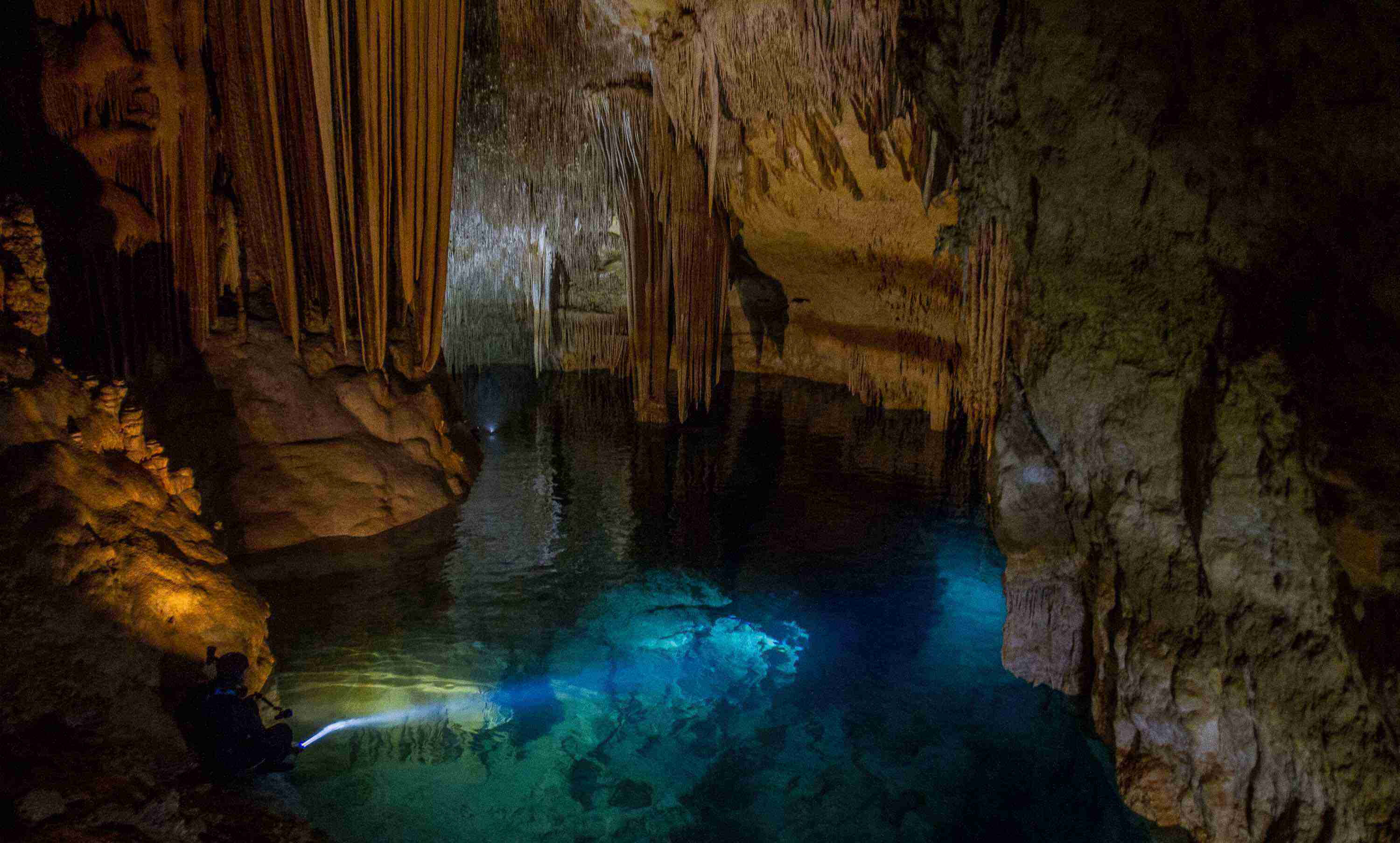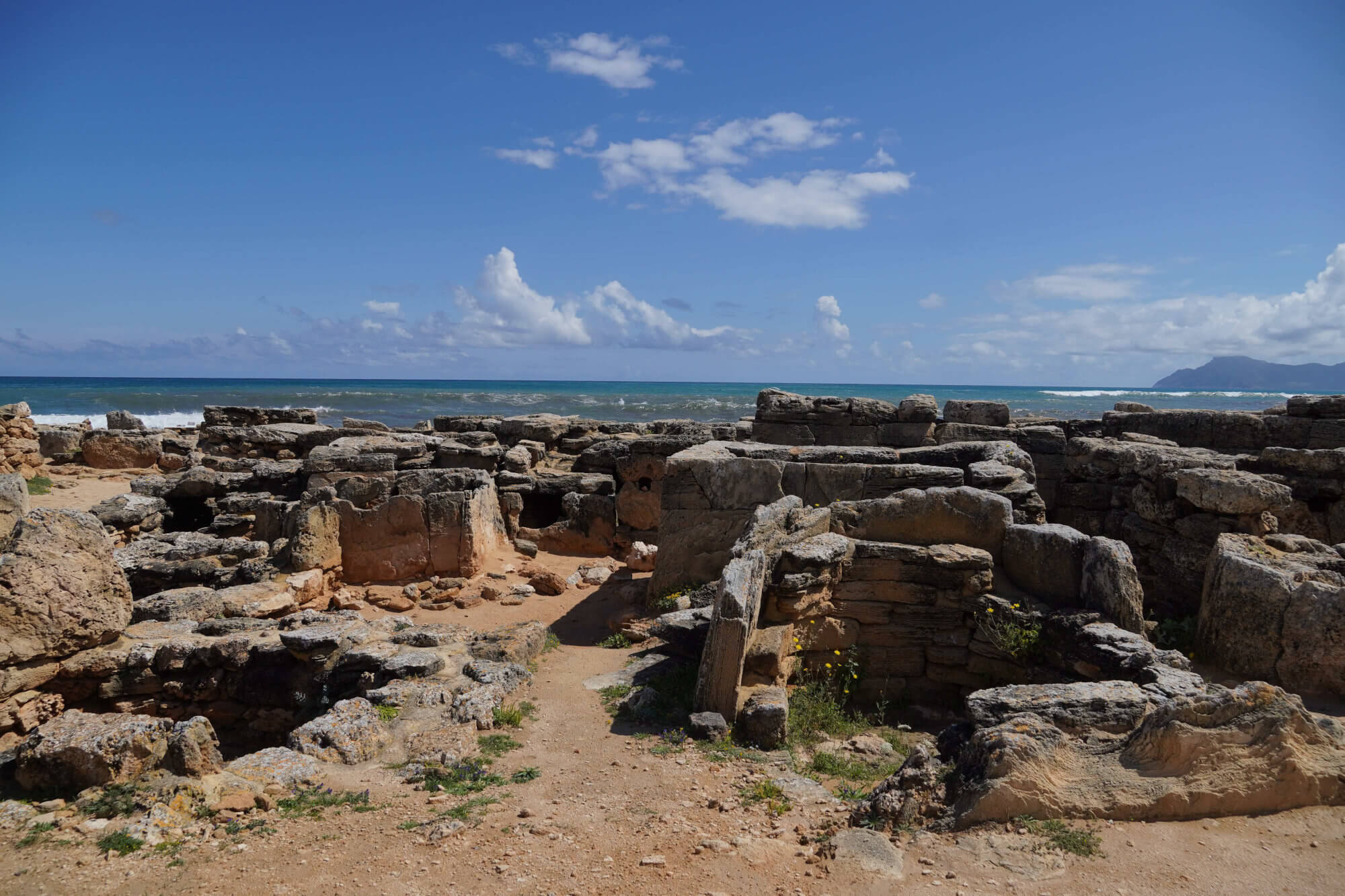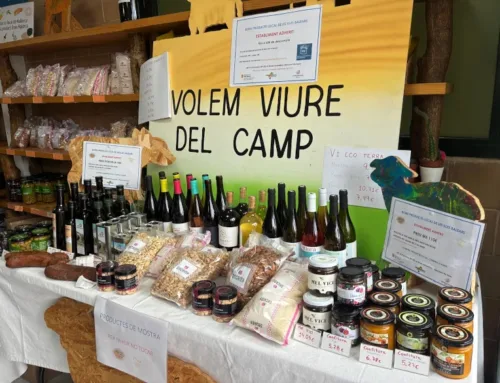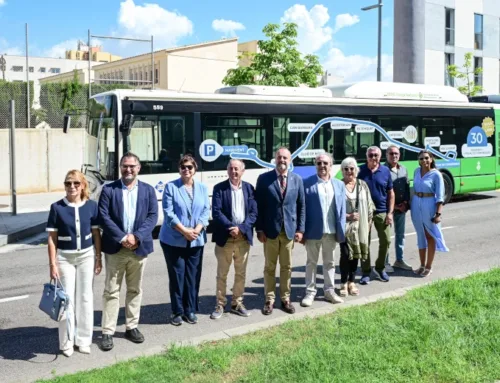The temperature drops and the days are shortened, however the possibilities of discovering Mallorca beyond its beaches are still endless. This year, in addition, the interest in touring the island has grown among Majorcans themselves due to restrictions on travelling. It is time to know those charming routes that dot Mallorca and plans to fill the winter months. Here are some proposals.
Text: Raúl Beltrán. Palma.
COVA DES COLOMS: Wetsuit to discover the underground Mallorca

Cova des Coloms. Photo: Skualo Diving Mallorca
Beneath the surface, Mallorca is an island full of underground conduits and sea caves result of millennia of erosion. To get started in the world of marine speleology, one of the most accessible adventures and that can even be done with children from 8 years old is to enter in the spectacular Cova des Coloms. Water activities lovers do not have to wait until next summer to visit this fascinating enclave, also known as the Cave of the Pirates. A name associated with the legends that tell how the pirates hid their treasures here.
To embark on an adventure, you just need to slip into your wetsuit and help yourself with the experience of professionals such as Jaume Nicolau, owner of Skualo dive center, which in low season organizes outings on demand for a minimum of four people. From Porto Cristo, in a few minutes you reach the cave’s entrance , where a room with a beach surrounded by stalactites and stalagmites welcomes visitors. Entering in its cavities increases the admiration for an unforgettable natural space.
CAMÍ DE MULETA: An oleotouristic itinerary among olive trees

Cami Sa Muleta. Photo: Conselleria de Agricultura
When summer ends, the Serra de Tramuntana becomes the favorite place for hikers in Mallorca. A different way to explore its Unesco heritage corners is through an oleotourism route. The Camí de Muleta is an itinerary of about 5 kilometers and of low difficulty that begins on the road from Sóller to Deia, the MA-10, in the kilometer 56.95.
Taking the asphalt road towards the sea, at the split you must continue along the right, which will soon be signposted as GR221. This is how you get to the houses of Muleta Gran, surrounded by olive trees. The road skirts the houses until it crosses a gate that enters the visitor in the olive grove of Cas Avinyons, in which Es Camell is located, a majestic olive tree. The path continues, always respecting the milestones, and crosses a torrent until finding the possession of Muleta de Ca s’Hereu, now converted into an agrotourism.To finish the route, you can follow the GR221 until Port of Sóller.
SON REAL PUBLIC ESTATE: A natural walk through the pre-Talayotic era

Necrópolis of Son Real. Photo: Conselleria Medio Ambiente
Nature, history and archeology come together in one of the most valuable spaces heritage of Mallorca: the public estate of Son Real. Located in Santa Margalida, it is considered a ‘Mallorca in miniature’ for bringing together historical, landscape and cultural island values in 395 hectares. It offers four trails of little difficulty (suitable for families) that traverse a diverse natural complex dotted with archaeological remains: the pre-Talayotic town of Es Figueral, the necropolis of Punta des Fenicios, caves and megalithic tombs, etc.
The farm welcomes visitors in its parking lot, its information office and the free archaeological museum site, opened from 9 am to 4 pm all year round. In addition, it houses the refuge of Son Real, in the old bathhouse of the possession’s owners, with capacity for 8 people.
CAMÍ DES CORREU: Following the steps of the ancient banyalbufarins

Banyalbufar, when arriving from Camí des Correu. Photo: Consorci Serra Tramuntana
The Camí des Correu was the only communication route between Banyalbufar and Esporles until XIX century. In medieval times, carts loaded with food passed along the path. Many times, they served to supply the city with local products such as ramallet tomatoes. Today this route is one of the most popular routes in the Serra. A journey of about eight kilometers of little difficulty in which you will not get lost, since the route begins in Esporles church.
The walk is included in the road network of the Pedra en Sec route and crosses places of interest such as the Pont de sa Turbina, the Torrent de Sant Pere, the possessions of Ses Mosqueres and Son Valentín and the Font de la Vila, which served to supply water to Banyalbufar’s terraces. If you add to the route the beauty of the municipalities at the beginning and end of the itinerary, makes it an essential plan for these winter months.







Leave A Comment